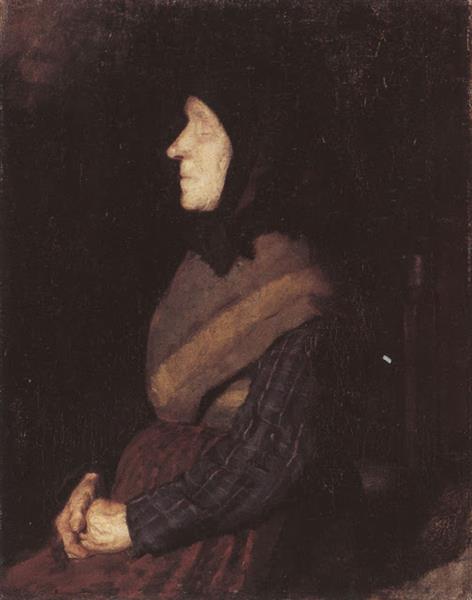Description
The work "Ane blind" (1882) by Anna Ancher is a clear reflection of the mastery of this Danish artist, who knew how to capture the essence of everyday life in her native Skagen. The painting presents us to a blind donkey, a symbolic element that invites reflection on vulnerability and dependence, while evoking a deep connection with nature. On this canvas, Anchor uses its characteristic luminist style, integrating a delicate brushstroke technique and a color palette that distils a sense of warmth and sincerity.
The first of the aspects to highlight "Ane blind" is the careful composition that the artist has achieved. The donkey, which assumes the central prominence, is located near the right edge of the work, allowing the viewer to admire the simplicity and honesty of the animal. This positioning not only highlights the figure, but also suggests a sense of isolation, emphasizing its blindness. The background, of softer tones and in harmony with the figure, represents a space that, although it could be considered limited or restricted, is also a place full of life and light.
The color palette used in the work is another remarkable aspect. Ancher moves between the warm tones, predominantly the brown and yellow, which provide a welcoming and nostalgic sensation. This choice of colors not only reflects the atmosphere of the Skagenense environment, but also suggests an intimate and familiar relationship between the viewer and the reason represented. Natural light, a key element in many of Anchar's works, wraps the donkey with a soft luminosity that enhances its three -dimensionality and humanity.
While in "Ane blind" the human figure is absent, the animal becomes a character in itself. Anna Ancher, through this representation, enters the exploration of a sense of belonging and connection with the environment. The donkey, despite its blindness, is a symbol of perseverance and strength amid adversity, which enhances the emotional burden of the work. This focus on non -humanized characters is one of Ancher's most recognizable characteristics, who often became interested in the representation of rural life and its inhabitants, both human and animals.
Anna Ancher was part of the painters known as the "Painters of Skagen", who sought to capture the light and life of the Scandinavian region. His work is a testimony of realism and attention to detail that characterize the Danish art of the late nineteenth century. In his career, Ancher stood out not only for the ability to represent color and light, but also for his ability to infuse his works a deep sense of humanity and emotion, evident characteristics in "Ane blind."
In summary, "Ane blind" by Anna Ancher is more than a simple representation of an animal; It is a meditation on life, vulnerability and connection with everyday life. The mastery with which the artist composes and gives life to the blind donkey, illuminated by warm lights and surrounded by an environment that suggests intimacy, invites us to contemplate and feel the story that unfolds before our eyes. In this work, realism and symbolism are intertwined, making you a fundamental figure within the Canon of Danish art, whose legacy continues to resonate today.
KUADROS ©, a famous paint on your wall.
Hand-made oil painting reproductions, with the quality of professional artists and the distinctive seal of KUADROS ©.
Art reproduction service with satisfaction guarantee. If you are not completely satisfied with the replica of your painting, we refund your money 100%.

